Art
Power of Art – Its Essential Role in a Child’s Growth
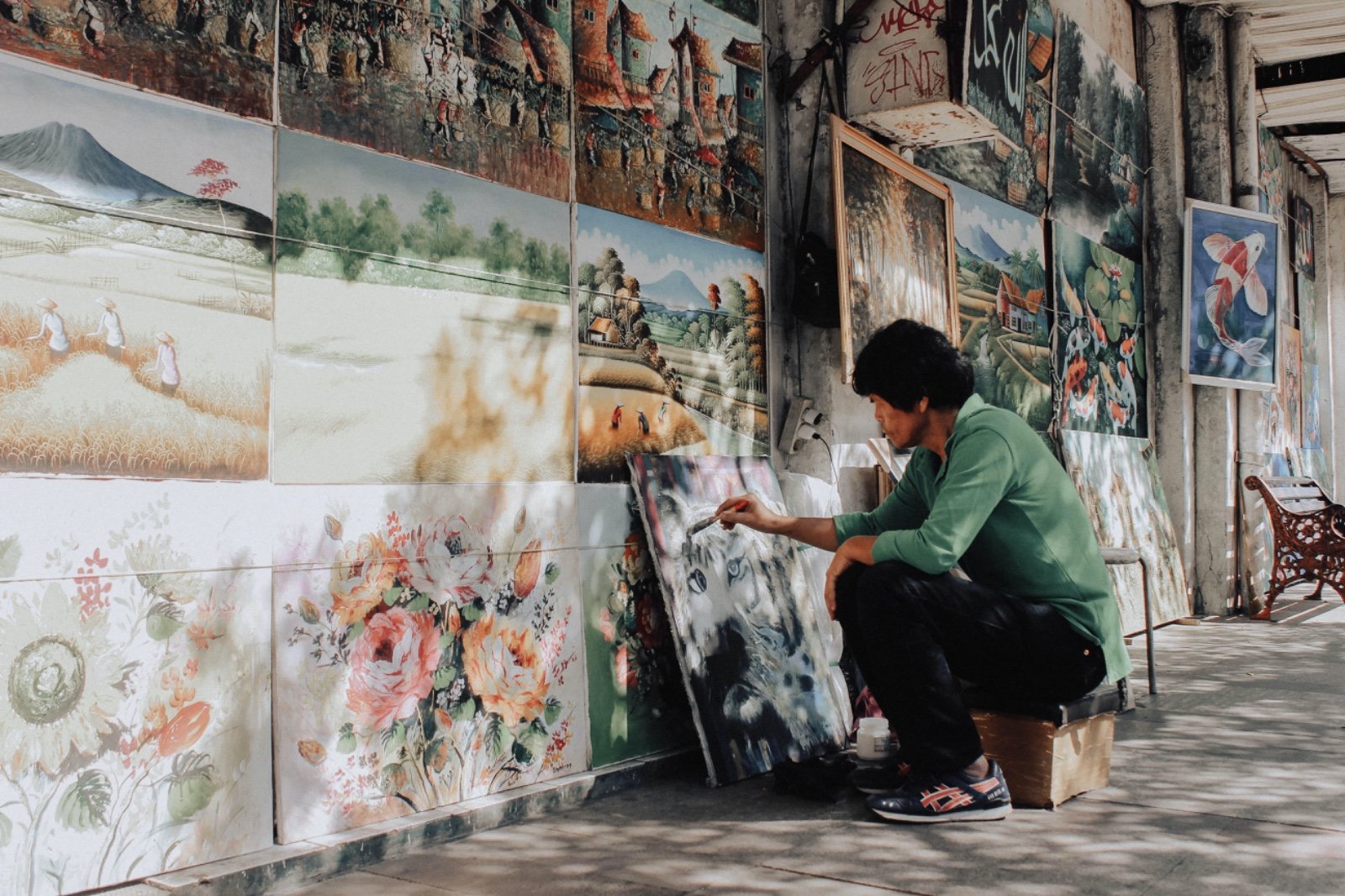
The power of art can be defined as the creative work of an individual. Art holds the potential to nurture well-rounded, capable, and creative individuals. It serves as a form of expression; it is not magic but rather creates visually engaging experiences. Additionally, art can be seen as the transformation of the basic principles of nature into beautiful forms that are suitable for human use. This creative activity reveals the beauty in everything, making it an ideal way to engage with the world.
Art is often viewed as a recreational activity for children, a pastime that engages them for a while and keeps them happy. But art is much more than that. The Power of Art plays a pivotal role in shaping young minds, impacting cognitive, emotional, and social development. Integrating art into a child’s daily life is not merely beneficial but essential. Art helps children connect with their emotions, improve their self-expression, and develop their motor skills. Here, we explore the importance of art in children’s lives and how it nurtures every aspect of their growth.
Table of Contents
The Power of Art: Its Benefits to Child’s Development
In addition to reading and writing common subjects in the school curriculum, engaging in art offers significant benefits for a child’s mental and physical development. Children who participate in creative activities from a young age tend to develop better skills, which will help them excel in the future and enhance their performance in various fields.
Cognitive Development: Art as a Brain Booster
Children’s brains are incredibly active from a young age. From a young age, they are naturally curious, inquisitive, and always looking to learn. The power of art encourages this natural curiosity, making it an excellent tool for cognitive development. When children engage or participate in art activities, they tend to enhance their memory, improve problem-solving skills, and sharpen their attention to detail.
Art helps children make important plans and develop decision-making skills. For example, when they choose which colors to use or how to depict an object, they are practicing important decision-making processes. This simple process serves as a foundation for more complex thought processes. Additionally, studies indicate that creating art can improve spatial awareness, as children learn to understand shapes, sizes, and proportions.
Moreover, art challenges children to think outside the box. They are then inspired to think creatively and stretch their imaginations. When children are given the freedom to create, their minds are free to explore new ideas and concepts. They might draw imaginative creatures or envision entirely new worlds. This kind of creative exploration promotes critical thinking and helps them consider situations from different perspectives. Therefore, the power of art serves as a significant catalyst for cognitive development, encouraging young minds to think and learn in ways that traditional education may not fully achieve.
Social Skills: Art as a Bridge for Connection
One often overlooked aspect of the power of art is its role in enhancing social skills. Art is not only a solitary pursuit; it can also be a shared experience. When children create art in a group, they have the opportunity to collaborate, share ideas, and respect others’ opinions. Collaborative art projects require communication, teamwork, and the sharing of materials, all of which are valuable social skills that children can carry into other areas of their lives.
When children create something together, it fosters a sense of belonging and connection. They learn how to listen to one another, respect differing opinions, and understand that everyone has unique perspectives. Art encourages children to appreciate diversity, as they see firsthand that each person’s creations are unique and valuable.
Art can also help children develop empathy. For example, a child who sees a friend struggling with a difficult art project may feel inclined to offer help or encouragement. This simple act of kindness builds empathy and compassion, teaching children to care for others’ feelings. The power of art in social development is undeniable, as it creates a foundation of collaboration, respect, and mutual support.
Below is a Little Explanation of the Total 7 Types of Benefits of Art Culture Hidden in Children:
Firstly: Below are These 5 Benefits Found in Children
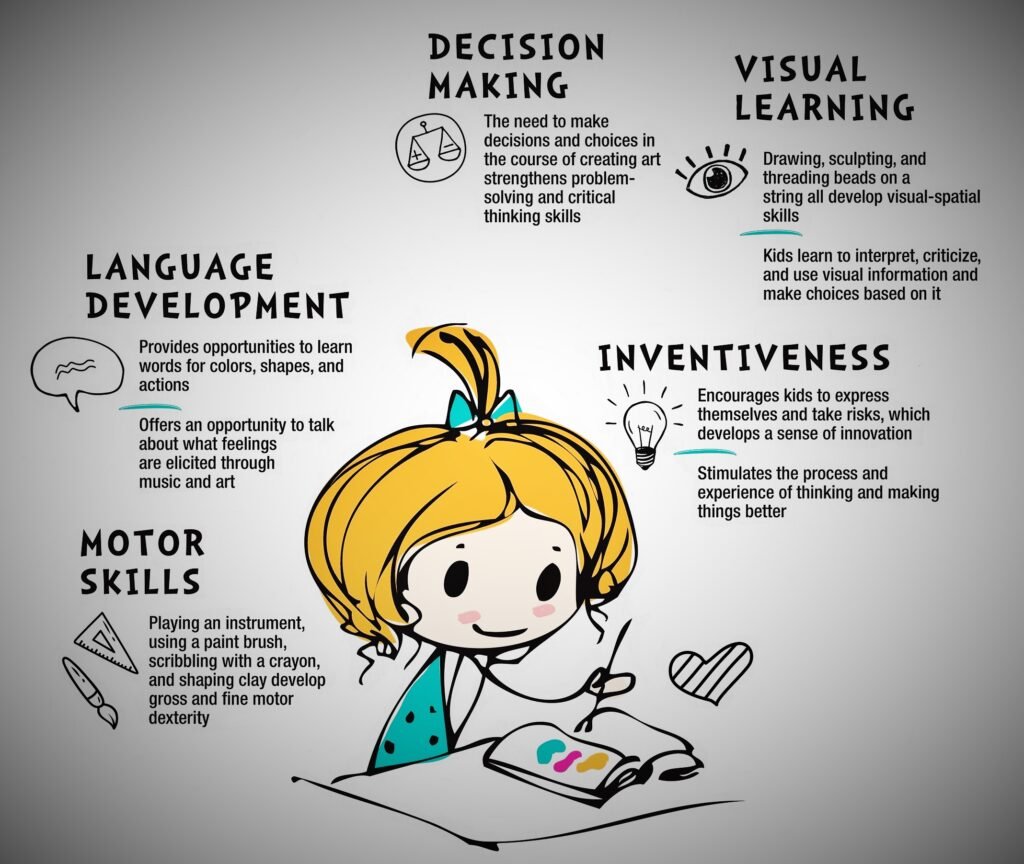
1. Enhancing Fine and Gross Motor Skills Through Art
Art is not only a form of expression; it also provides a hands-on experience that helps children develop essential physical skills. When young children participate in art activities, they are building fine motor skills that are very beneficial for everyday tasks. Using crayons, pencils, and brushes strengthens the small muscles in their hands and improves hand-eye coordination. This development is crucial for later activities such as writing, tying shoelaces, and using tools.
For younger children, art often entails whole-body movements. They may stand at easels, reach across large paper canvases, or mold clay with both hands. These activities help improve gross motor skills, balance, and spatial awareness. The power of art lies in its ability to provide a fun and engaging way for children to strengthen their bodies while exploring their creativity.
As children grow older, art plays a significant role in enhancing their physical skills. Engaging in activities like creating intricate designs or handling small objects helps refine their precision and control. Art not only nurtures creativity but actively supports children’s academic background and the physical development they need to succeed in everyday life.
2. Language Development: How Power of Art Boosts Communication Skills in Children

Art does more than let children create beautiful things. Sometimes some engaging in simple activities, such as crumpling a piece of paper into a ball and identifying its color, can greatly aid children in learning vocabulary, colors, shapes, and actions. Additionally, these activities encourage them to use descriptive language to express their feelings about their artwork or creations.
Art projects often involve storytelling, a skill that plays a critical role in language development. When children paint a family picnic scene or draw their favorite animal, they aren’t just creating an image. They’re forming a narrative. They learn to think sequentially: what happened first, what happens next, and how the story ends. This skill in storytelling aids in developing organized thought and communication, helping them in both speaking and writing.
In group art settings, children learn the language of collaboration. They talk to their peers about shared ideas, offer suggestions, and respond to feedback. This setting teaches them to listen actively, respond respectfully, and communicate clearly. It builds not only language skills but also patience and empathy. Art also provides a platform for children to explore and learn new vocabulary. When introduced to different art tools, techniques, or styles, they encounter new words—like “pastel,” “hue,” or “collage.” They start understanding and using these terms, expanding their language in a way that’s both engaging and meaningful.
Furthermore, art can be especially beneficial for children who may struggle with verbal communication. The power of art becomes their voice. As they grow comfortable expressing themselves through their creations, they often find it easier to transition to verbal expression. Incorporating art into a child’s life has lasting effects on their language abilities. The skills they develop through art lay the groundwork for effective communication throughout their lives. Art fosters an environment where language can grow, encouraging children to articulate ideas, share stories, and embrace the joy of self-expression.
3. Decision-Making and Problem-Solving: Art Teaches Creative Thinking
The power of art education may even strengthen critical thinking and problem-solving skills. They will hence carry their ability or skill in their future life, which will help them achieve success in their desired field.
Art does not come with strict rules. Children can create whatever they imagine without limits. This freedom, found in the power of art, allows children to think creatively and teaches solve problems.
Art teaches children valuable problem-solving skills, whether they are figuring out how to mix colors to achieve the perfect shade or choosing the right materials to use. These problem-solving skills are invaluable, helping children tackle challenges both inside and outside the classroom. Art empowers children to approach problems from different perspectives, encouraging flexible and adaptive thinking.
4. Visual Learning and Building Confidence: Art as a Self-Esteem Booster
Engaging in activities like sculpting with clay, putting and tying beads on a string and drawing helps to develop visual-spatial learning and skills among children. For instance, consider the impact of art on children’s abilities. Nowadays, children can handle tablets and smartphones with surprising efficiency and impressive proficiency, even before they have learned to read or write. This demonstrates that they can develop visual skills more quickly and effectively than before.
When children create art, they experience a sense of achievement. Completing a drawing or painting makes them proud of their work. This boost to self-esteem is one of the remarkable aspects of the power of art.
Art encourages children to explore their unique talents as they engage with creative activities. As they immerse themselves in art, they learn to value their ideas and express themselves freely. Each completed project boosts their confidence and reinforces their belief in the value of their creativity. Over time, this self-assurance extends to other areas of their lives, creating a surprising phenomenon of growth and unpredictability, which often leads to unexpected results. It helps them face new approaches and challenges with optimism.
5. Inventiveness and A Lifelong Love: The Power of Art Creates Future Creators
When children create pictures, they have the opportunity to express their own imaginations. Sometimes they effectively express their ideas, also while other times they may need more time to articulate them. Regardless of the outcome, this process fosters a sense of innovation that contributes to their development and will stay with them into adulthood.
Engaging with art fosters a lifelong love of creativity. When children are exposed to art while growing up, they are more likely to engage in creative pursuits as adults. Whether they choose to become artists, engineers, teachers, or designers, this early introduction to art nurtures a mindset that values innovation and creativity.
The power of art isn’t limited to childhood. It extends far beyond childhood. It lays the foundation for a life rich in imagination, passion, and discovery. By cultivating a love for art, we provide children with a valuable tool that brings joy, meaning, and inspiration throughout their lives.
Secondly: Cultural Awareness and Academic Achievement – These 2 Parts are Intrinsically Involved in Improving Children’s Development

1. Cultural Awareness: Art Teaches Diversity and Appreciation
A child can develop cultural awareness through images due to the power of art. For example, suppose if a child, plays with a toy that implies sexist or racist meanings, certain interpretations can form in the child’s mind. This happens because the child may internalize part based on some of the meanings of the toy’s features, such as the shape, color, and texture of the hair.
Art introduces children to diverse cultures, styles, and histories. When children they will learn about different artistic traditions then they gain a broader understanding of the world. The power of art will help them appreciate diversity and find beauty in differences.
For example, children may learn about ancient Egyptian art or Aboriginal dot paintings, which can spark an interest in different cultures. This exposure helps them appreciate the unique customs and traditions of various peoples. Art teaches children that every culture has its own stories and expressions, helping to instill respect and empathy from a young age.
2. Improvement in Enhancing Academic Performance: The Power of Art Supports Other Subjects
There is a correlation between academic achievement and involvement in the arts. Children who regularly engage in painting and other artistic activities are four times more likely to receive recognition for their academic accomplishments. Furthermore, many of these children have also won awards in various academic competitions. In contrast, those who do not participate in the arts are often at a disadvantage.
Art might appear to be distinct from traditional academic subjects, but it actually plays a significant role in enhancing overall learning. Activities such as drawing help children develop visual-spatial skills, which are important for subjects like math and reading. By engaging with patterns, shapes, and colors, children deepen their understanding of mathematical concepts and geometry.
The power of art also enhances language skills. Art plays a powerful role in developing language skills as well. When children describe their artwork, they enhance their vocabulary, storytelling abilities, and communication skills. This practice encourages them to articulate their ideas, creating a stronger and deeper connection between creative expression and language. By children integrating art with academic subjects, so we help foster a more enriching and more balanced learning experience.
Encouraging Patience: The Power of Art teaches to demonstrate the value of persistence
Creating art demands time, focus, and patience. Children often have to wait for the paint to dry or try out different techniques to realize their vision. This process teaches them the importance of patience and persistence, reinforcing the idea that, good things take time to do.
The power of art helps children understand that consistent practice leads to progress. Even if a project does not turn out as expected, they learn to keep trying the importance of perseverance, and refining their skills. This sense of persistence becomes a lifelong asset, encouraging children to face challenges with determination and resilience.
Stress Relief: The Power of Art Helps as a Source of a Calming Effect
Life can feel overwhelming, even for young children. Art provides a safe outlet for relaxation and stress relief. When children immerse themselves in painting, drawing, or crafting, they often experience a sense of calm.
The stress-relieving power of art helps children relax and recharge. Engaging with artist activities allows them to release their worries and focus on the present moment. Studies suggest that creating art can reduce anxiety, making it a beneficial outlet for children who need a break from daily pressures. Art offers a positive escape, supporting their emotional well-being in a gentle, and natural way.
The Conclusion
In a world that often emphasizes academic achievements and structured learning, the power of art serves as a vital counterbalance. Art fosters creativity, expression, social skills, and physical abilities, helping children become well-rounded individuals. It provides a safe space for exploration and self-expression, allowing children to grow emotionally, socially, and physically. By embracing art as an essential part of childhood, parents and educators offer children the tools to understand themselves and the world around them.
The power of art is transformative. It is not merely a subject to be taught but a means to unlock a child’s potential, bringing out the best in their personality and skills. Through art, children gain a sense of self, confidence, and empathy, along with the fine motor skills necessary for success. The benefits of art are endless, making it a cornerstone of child development that should be celebrated and supported.
Encouraging children to create, explore, and express themselves through art gives them a foundation that can support them for a lifetime. Art helps children learn about the beauty of diversity, the strength of teamwork, and the importance of self-expression. The world benefits when young minds are nurtured with art, creating a future generation that values creativity, compassion, and understanding.
Art
Creative Art Ideas – Twelve Imagination Perspective of the Virtuous Man
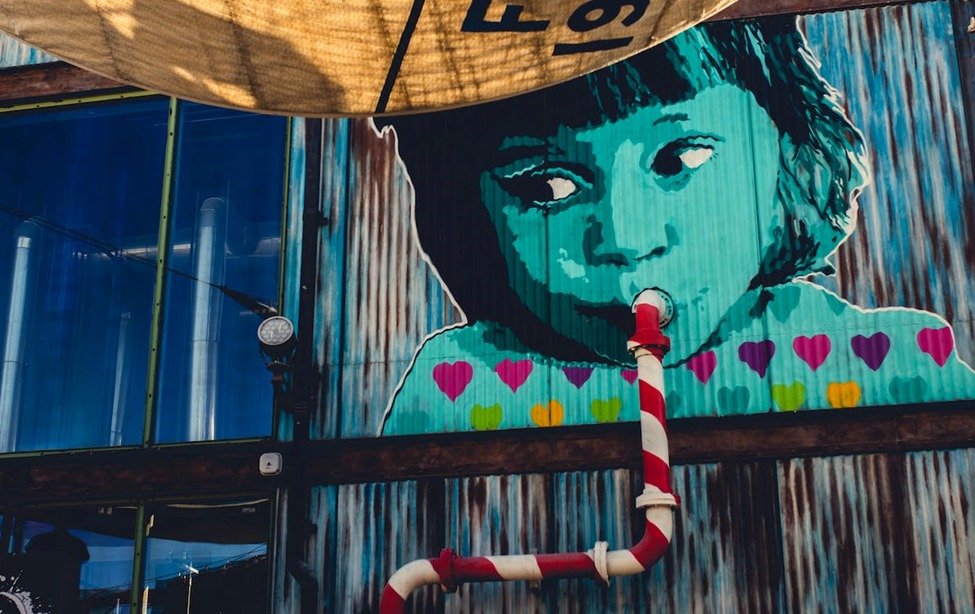
Art has always been a profound medium of self-expression, allowing individuals to explore and communicate their ideas, emotions and perceptions. In this exploration, imagination plays a key role. A virtuoso, guided by his principles and inner wisdom, brings a unique perspective to art-transforming the mundane into the extraordinary. This article will explore a variety of creative art ideas across different mediums and styles, providing new inspiration for artists of all types.
Table of Contents
1. Creative Art Ideas: A Gateway to Unlocking Boundless Imagination
Creative art ideas serve as the basis for innovation. Whether you’re an aspiring artist or a seasoned creator, having a list of diverse and exciting creative art ideas can help you step outside of your comfort zone. These ideas inspire imagination, often leading to the discovery of new techniques, perspectives and styles.
The concept of “creative art” is not limited to traditional forms; It spans mediums like digital art ideas, pixel art ideas, nail art ideas and even the creative art ideas can be used for home decoration. Each offers a unique challenge and opportunity to explore new avenues of expression. This type of art allows the artist to experiment with different forms, leading to an artistic journey that feels as limitless as one’s imagination.
2. From Traditional to Modern: Exploring Various Creative Art Ideas

The creation of Leonardo da Vinci
a) Pixel Art Ideas: The Intersection of Nostalgia and Innovation
One of the most fascinating art ideas is pixel art. Inspired by retro video games from the 80s and 90s, pixel art ideas bring back a sense of nostalgia while pushing the boundaries of digital creativity. Pixel art is characterized by the use of small square pixels to create images, which gives it a unique charm in its simplicity. It’s a great example of creative art ideas that combine retro elements with modern techniques to produce visually striking works.
Pixel art allows artists to explore the balance between minimalism and complexity, often creating captivating, highly stylized images. Whether it’s a simple character design or a more complex landscape, pixel art ideas offer a creative outlet for anyone willing to embrace its quirky, geometric style.
b) Nail Art Ideas: Small Can Be Beautiful
When it comes to art concepts, nail art is often underrated, yet it holds significant potential for creative exploration. Nail art ideas blend beauty, precision and artistic flair in a way that draws attention to one’s hands, transforming nails into miniature canvases. Whether it’s simple polka dots, intricate floral designs, or bold geometric patterns, nail art challenges artists to master the smallest details.
The best part about nail art is that it allows for endless creativity while still being manageable. It’s one of the most accessible forms of creative art, and with tools from brushes to stencils, the possibilities are endless.
c) Wall Art Ideas: Decorating Your World with Creativity
Art extends beyond the canvas, and wall art ideas offer a unique opportunity to combine creativity with everyday life. The walls of our homes, offices and public spaces are the perfect setting to display artistic expression. From murals to framed prints, wall art allows artists to create large-scale works that captivate and inspire.
One of the most attractive wall art ideas is abstract art. The abstract art ideas gives the freedom to explore color, shape and form without the constraints of realism. For those who love more traditional works, landscapes, portraits or even the art of zoo, the walls can be brought to life in interesting ways.
3. Exploring the Boundaries of Creative Expression

a) Digital Art Ideas: The Intersection of Technology and Art
The digital age has opened up new frontiers in industry. Digital art ideas provide a platform for artists to experiment with mediums, textures and effects that were previously difficult or impossible to achieve. Whether using a drawing tablet, Photoshop, or a variety of apps, digital tools empower creators to bring their visions to life with unparalleled ease and precision.
Digital art is an exciting field, not just for creating hyper-realistic works; It is a lively playground for abstract art ideas and more playful creations. From cute art concepts like adorable cartoonish characters to more complex designs like fantasy worlds, digital platforms offer endless possibilities for artistic exploration. So, let your imagination run wild and explore the limitless possibilities that await you in the world of digital artistry!
b) Abstract Art Ideas: Beyond the Literal
One of the most free forms of creative art is abstract art. Without any defined structure or rules, the concept of abstract art allows artists to express emotions, ideas and experiences through shapes, colors and forms. This genre of art can range from highly textured paintings to minimalist designs and often invites the viewer to interpret the piece in a personal way.
For many, creating abstract art expresses the need for control. The absence of a clear subject allows the artist to let their instincts guide their brush, pen or digital tool, making each piece a reflection of their creative journey.
4. Creative Art Projects: Turning Ideas into Reality
a) Easy Creative Art Drawing: Jumpstart Your Artistic Journey
Not all creative art ideas need to be complex or time-consuming. For beginners or anyone looking to spark their creativity, an easy creative art drawing can be the perfect starting point. These projects allow the artist to build their skills and confidence before moving on to more elaborate works. Simple sketches, doodles, and patterns can evolve into something much bigger with practice and patience.
Easy drawings are also a great way to experiment with new techniques or explore different mediums. Whether it’s sketching with pencils, using charcoal, or experimenting with watercolors, a quick and simple drawing can help break through creative blocks and spark new ideas.
b) Creative Art Decoration: Bringing Your Space to Life
Art can serve as a form of decoration. Creative art decoration transforms a space with artwork that reflects one’s personality, taste and imagination. This can include a variety of mediums, from framed paintings to nail art ideas for personal accessories. The beauty of creative decor lies in its ability to make a space more alive, vibrant and unique.
The ideas of decoration is not limited to the home. Creative art ideas can also extend to events, festivals, or public spaces where art serves to enhance the atmosphere. For example, a wall mural featuring the art of clown could transform an event venue into a whimsical and fun environment, adding both humor and color.
5. The Role of the Creative Art Director
A creative art director plays an important role in the vision of a project. In many industries—such as advertising, film, fashion, etc.—creative art directors are responsible for overseeing the visual elements of campaigns or products. They are tasked with ensuring that the artistic vision aligns with the overall goals of the project while leading a team of artists and designers.
A great creative art director doesn’t just follow trends—they set them. By understanding the psychology of design, the impact of color, and the importance of cohesion, a skilled creative art director can bring together various creative art ideas to create a unified, compelling work.
6. The Intersection of Craft and Art

a) Creative Art and Craft: Where Technique Meets Expression
While art often evokes lofty ideals and deep expression, creative art and craft brings a more hands-on, tactile aspect to the process. Crafting allows artists to physically interact with their materials, creating something beautiful with their hands. Whether it’s making cool art ideas like paper sculptures, knitting, or creating jewelry, craft-based art combines technique with creativity in ways that feel incredibly personal.
The art of crafting often carries a sense of tradition, and yet it continues to evolve. Artists can take old materials—such as fabric, wood, or clay—and transform them into modern, unique pieces. This blend of creativity and craftsmanship is where personal style shines through.
b) Creative Art Projects for Everyone: From Beginner to Project
Not all creative projects need to be large-scale or overly complex. Creative art projects can be tailored to anyone, regardless of skill level or experience. A beginner might start with an easy creative art drawing, while an advanced artist might explore pixel art ideas or complex digital art ideas.The key to any successful creative art project is the willingness to experiment and step outside of one’s comfort zone. Whether you’re creating abstract art ideas or a more realistic piece like the art of zoo, each project is an opportunity to grow and refine your skills.
7. The Role of Art in Social Change
Art has long been a powerful tool for social change, and creative art ideas often serve as a vehicle for commenting on current events, social issues, or historical reflections. “People’s art” has historically been a medium for expressing dissent, protest and alternative viewpoints. Today, art retains this revolutionary potential, with many artists using their work to raise awareness of important issues.
For example, wall art ideas often serve as a form of public expression. Murals can communicate messages of unity, hope and resistance, creating public spaces where ideas are shared and debated. The art of zoo, which often depicts the relationship between humans and animals, can be used to draw attention to animal rights and environmental conservation.
Similarly, the art of clown—once seen as a light form of entertainment—has been used in some contemporary works to comment on social structures, expressing a deeper critique of the absurdity of life. In this case, the creative art director often directs the project so that the message is conveyed effectively and meaningfully to the audience.
8. Harnessing Your Creative Potential
Creativity is not a limited resource – it grows and develops the more you nurture it. While many people may think of creative arts ideas as something that comes easily or is reserved for a select few, the truth is that creativity can be cultivated. Artists can develop their skills over time by constantly exploring new techniques, mediums and methods for their work.
Starting with small projects—like easy creative art drawings or simple nail art ideas—can be a great way to ease into more complex artistic endeavors. Over time, artists will begin to refine their skills, learning how to express themselves more effectively. As with any creative pursuit, the key is persistence and experimentation. Those who are open to new experiences and unafraid of failure will find that their creativity expands in ways they never thought possible.
For example, a creative art project may start with a rough sketch or abstract idea but turn into something completely unexpected. The process of creation, with its ebb and flow, allows for growth and innovation. The most meaningful works of art often embrace uncertainty and allow the creative process to take you on unplanned journeys.
9. Art as a Reflection of the Self
Art is deeply personal, and often, the best creative art ideas come from a place of personal experience or introspection. Artists express their identity, culture, beliefs and emotions through their work, often creating pieces that deeply reflect who they are.
When engaging with abstract art concepts, for example, the artist may choose to convey an emotion or mood rather than a literal image. Through the use of color, texture and shape, they can communicate feelings that are difficult to convey through words. In this way, art becomes a mirror of the soul – for both the artist and the audience.
Even beautiful art ideas—often characterized by adorable characters or playful designs—can have deeper meanings. These works can evoke feelings of joy, innocence or nostalgia, offering the artist a way to explore their inner child or reconnect with a happier time. Moreover, this kind of creative art is very beneficial in a child’s growth. In many cases, the art of clowns or cartoonish designs can carry a playful yet poignant message, adding a layer of complexity to seemingly simple art forms.
10. Creative Art Ideas for Building Stronger Connections
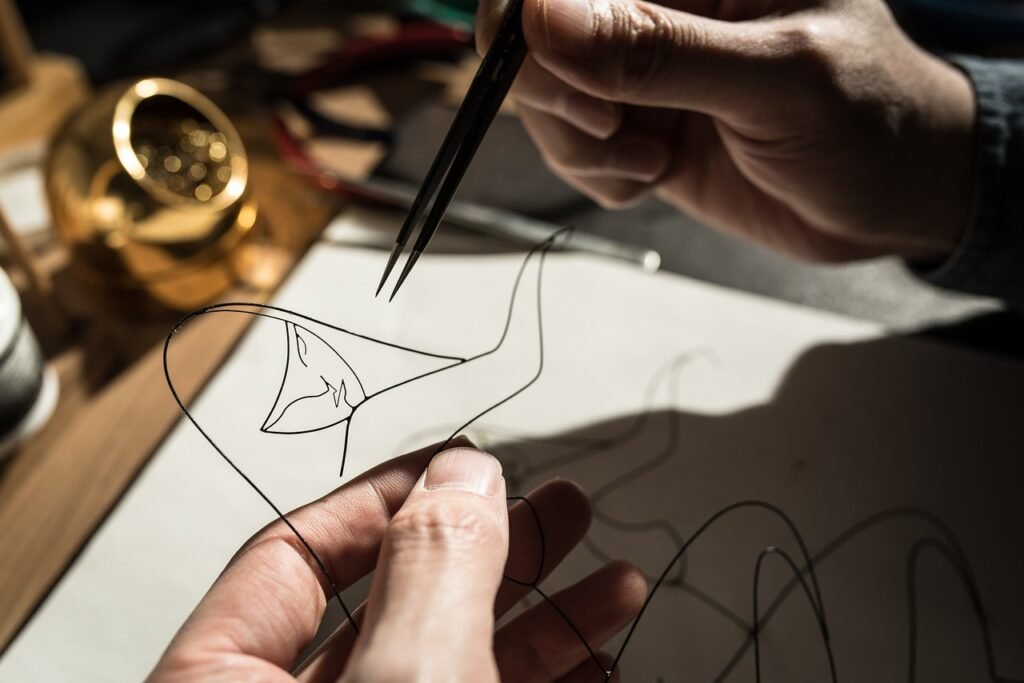
Art has always been a means of connecting with others – whether a piece is evoked through shared experience or through emotion. This shared experience is particularly evident in collaborative art forms and community projects.
For example, consider a creative arts project in which a group of people work together to create a large mural or installation, exploring various creative art ideas. This type of project encourages teamwork and communication, as each person contributes their unique skills and ideas to a larger goal. Whether you’re designing a piece of wall art for a public space or collaborating on pixel art ideas for a virtual community, the act of creating together fosters a sense of connection and collective achievement.
Even when created alone, creative art ideas can serve as a bridge to others. For example, a digital artist can share their digital art ideas online, receiving feedback and appreciation from a global audience. This exchange of ideas, techniques and interpretations strengthens the sense of community within the creative world.
Artists can also use creative art ideas to comment on social issues, helping to bring people together to address important issues. For example, zoo art can not only show beautiful representations of animals but also raise awareness about wildlife conservation. Likewise, the art of the clown has often been used to both entertain and subtly subvert social norms, providing a platform for humor, joy, and conversation about the absurdities of life.
Through art, we connect not only with ourselves but also with others, be they fellow artists or listeners. Art can be a universal language that transcends barriers, allowing people from different cultures and backgrounds to understand each other in meaningful ways.
11. How Creative Art Ideas Inspire Innovation
The most groundbreaking creative art ideas often inspire innovation beyond the art world. The way that artists think, approach problems, and experiment with new ideas can be applied to many other fields, from technology to science to business. The core of creativity is not about producing something purely aesthetic; it’s about solving problems in new ways, challenging conventional thinking, and reimagining the world around us.
For example, many cutting-edge designs in fashion or architecture come from creative art ideas that challenge traditional boundaries. The principles that underlie digital art ideas—layering, texture, form, and color—are the same principles used in product design and branding. Artists are often the first to envision something entirely new, and this ability to think outside the box often leads to innovations that change entire industries.
Take, for instance, pixel art ideas, which emerged as a low-resolution form of digital art in the early days of video games. Today, these retro designs are not only nostalgic but also serve as an inspiration for modern artists and designers who experiment with limited resources to create highly stylized images. In the same vein, abstract art ideas have influenced everything from modern architecture to the design of everyday products.
Artists, especially those working with new mediums like digital art ideas, often find themselves at the forefront of technological innovation. Whether it’s through the use of augmented reality (AR), virtual reality (VR), or AI-powered tools, the fusion of technology and creativity continues to push boundaries. These innovations have led to new artistic possibilities—allowing creators to merge the digital and physical worlds in ways that were once unimaginable.
12. The Ever-Evolving World of Creative Art Ideas

The world of art is dynamic and ever-evolving, and creative art ideas are constantly being shaped by culture, technology, and the individual artist’s vision. New trends emerge all the time, as creators continue to explore the unknown and push the limits of their craft.
For instance, cool art ideas might include new takes on old forms—like reimagining classic art techniques using modern tools and perspectives. Abstract art ideas are constantly being reshaped as new technologies, such as 3D modeling and AI, allow for new forms of expression that challenge the very definition of what art can be.
As technology advances, artists are increasingly blending the digital and physical worlds. Artists who specialize in digital art ideas can now produce works that interact with the viewer through motion, sound, or interactivity. Even creative art ideas more traditional art forms, like wall art ideas, are being reimagined with augmented reality to create immersive experiences that go beyond what is physically painted on the wall.
The future of creative art ideas is boundless. As more artists embrace technology and engage with emerging trends, we are likely to see even more fascinating ways of blending creativity with innovation. Whether it’s through nail art ideas, pixel art ideas, or the incorporation of virtual spaces, art is no longer confined to the canvas—it’s expanding into new realms where the artist’s imagination can roam freely.
Conclusion: The Infinite Potential of Creative Art Ideas
The beauty of creative art lies in its infinite potential. From cute art ideas to more sophisticated digital art ideas, there are endless ways to explore and express your imagination. The journey of a virtuous man—or any artist—lies in the pursuit of self-expression through creative mediums, whether through drawing, crafting, or even digital design.
By embracing the broad spectrum of creative art ideas, from easy creative drawings to intricate abstract pieces, artists can continue to push the boundaries of their own imagination. Whether you are working on a creative art decoration for your home, a creative art project for a school assignment, or exploring something entirely new, the possibilities are boundless.
Ultimately, creativity is not confined by rules—it thrives when we embrace the unknown, follow our instincts, and let our imagination lead the way. So pick up your tools, whether it’s a pencil, a paintbrush, or a digital tablet, and explore the vast world of creative art.
Art
Destinations for Art Lovers
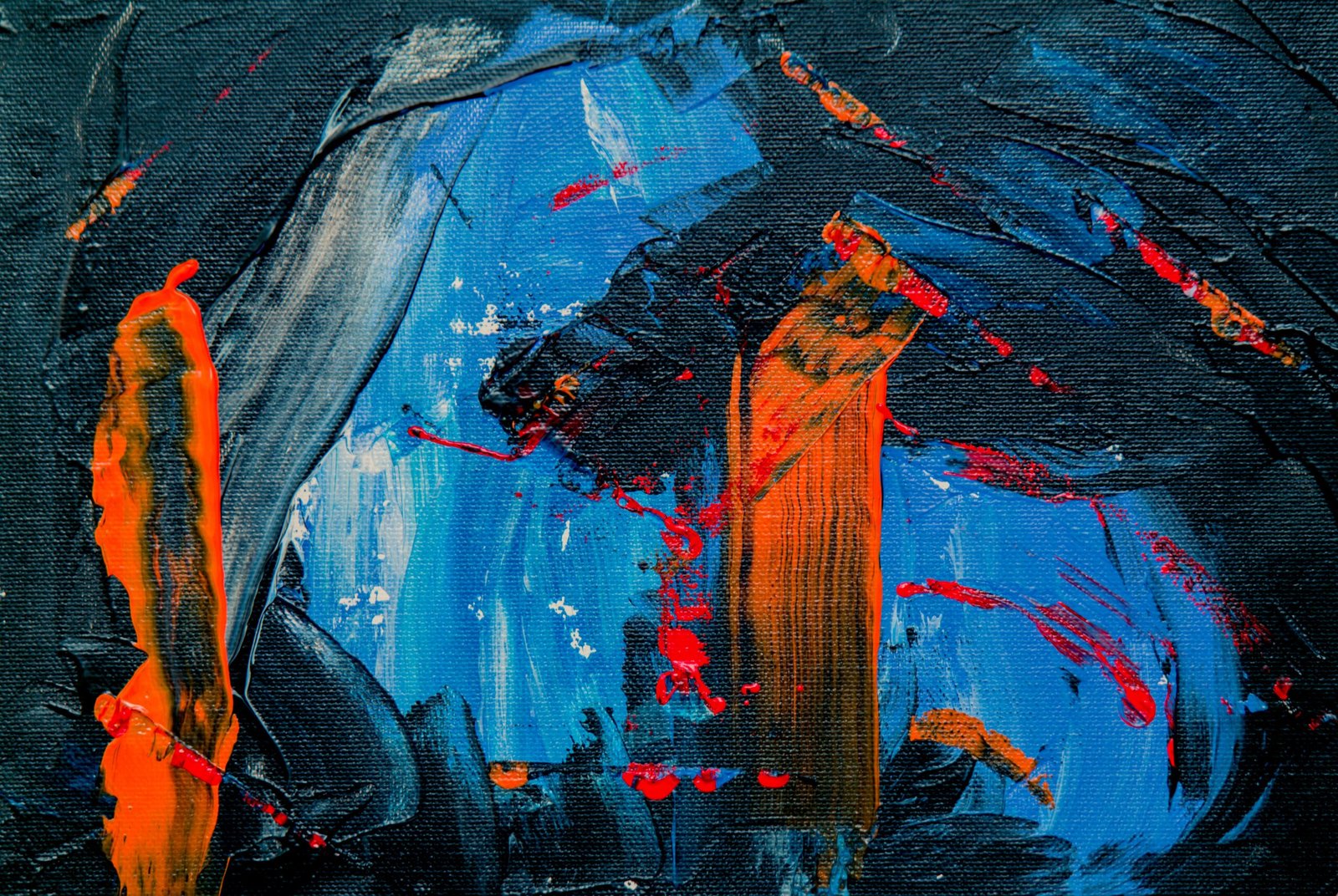
Are you an artist? Or do you love art? Or do you have the cravings to know about the best artworks around the world? Then there is definitely a checklist for you. Here are some places one shouldn’t miss especially if the person is intoart:
British Museum, London
Founded in 1759, this is one of world’s most visited museums. It has the biggest number of artefacts (8 million) ranging from human history to culture. One the one hand it hosts artworks by renowned artists like Van Gogh, Michelangelo; and on the other there are several artefacts embedded with history like Rosetta Stone.
Thus the British Museum is no doubt one of the most well known and most reputed museum around the world and of course a dream destination for art lovers.
Vatican Museums, Italy
Being previously a papal palace, the Vatican Museum is hosting the museum since 1506 and is definitely the oldest. It houses more than seventy thousand artefacts divided into twenty-two sections. All these collections are unique and individual by nature and equally astonishing.
Several such sections include the Raphael Rooms, which consists whole lot of rooms full of Raphael’s works; the collection of paintings from the Medieval and Renaissance period and the Sistine Chapel by Michelangelo.
Louvre Museum, Paris
This museum is located in the very heart of Paris. It became a museum almost two hundred years ago and before that it used to be a fortress for hundreds of years from the 12th century onwards. It tops the list regarding popularity, space and age.

The attractions are several and there are numerous priceless artworks divided in eight sections covering from the era of Ancient Egypt to Romantic Period. However the main attraction of the museum is obviously Vinci’s legendary painting Mona Lisa.
Metropolitan Museum of Art, New York
Popularly known as The Met, this museum is housing more than two million artworks since 1872 and is one of the most visited museums on this planet. There are seventeen curatorial sections and the artefacts are divided among them.
There is a breathtaking collection of paintings from Europe. Botticelli, Rembrandt, Vermeer, Degas, Rodin are few names worth mentioning. Apart from these there are one American section full of artefacts and also a section devoted to Egypt.
The Prado, Spain
One of the oldest museums in world, The Prado museum is situated in Madrid. The collection of this museum owes a lot to the Spanish Kings and Queens. Their collection of several centuries rests proudly in this museum. There are paintings of Velázquez, Goya and of several other famous artists. This museum not only hosts paintings of Spain but has a great collection of Italian artworks as well.
Surely, there can be no such list which may rank these dream destinations of art lovers. However, this can work as a basic checklist if you are clueless about the iconic art works and where they are being kept held. So, the wait is over. Stop reading and start exploring.
Art
Art Helps Create Better Living

Not everyone is an artist. Not everyone understands art. Yet there are numerous ways in which art can help people lead a better life. You need not be an artistic person for this. Just find a little enthusiasm and time to invest in art and you can lead a much more productive, happy and healthy life. Here are reasons:
Escape the Mundane
Are you going through a bad phase? Are you a little bit too overwhelmed maintaining the daily routine regularly? Take a break and visit the local museum or gallery because psychological studies have shown that even looking at art helps get rid of stress and anxiety. Especially landscape pictures are real food for the mind for they help buy tickets for the vacation you can’t afford right now.
Art Equivalents to Smart
Art works like a positive catalyst and helps the brain work better. The blood circulation in brain increases even by looking at art forms and paintings. A study in 2013 showed how students with more artistic exposure are more capable of numerous qualities like analytic skills; they are more tolerant by nature. So art is equals to smart!

Energy Drink for Productivity
Numerous reports have revealed that art helps boost up creativity. People who work in an office space decked with artworks and paintings show more creativity and productivity in their due work. This even gets better when they become allowed to choose the artworks and decorate them as per their wishes.
Apart from this different colors have different impact on the mind. For instance if the color is blue it helps achieve stability, red affects the creative process etc.
The Healing Capacity of Art
Art has immense healing power. Both creating and observing art are help benefit the health. Reports have shown how art helps patients improve health if introduced in the hospital atmosphere. Even doctors acknowledge nowadays this healing capacity of artworks. Patients recover early if they get access to paintings regularly. An America based study have shown how several patients have acknowledged the help of art based activities in increasing the speed of recovery and betterment of medical outcome.
Art Helps the Communication Process
Art can be a better alternative in the process of communication than words sometimes. There are numerous things that can’t be expressed through words. Art helps someone expressed those emotions and gives them a reliable medium. When someone else looks at those artworks a bridge of communication gets created.
Artists throughout this world create artworks and express their concerns, protests through these mediums. In this way art is able to help build a better world, where peace is the medium of communication.
Single yet Artistic
When we romantically get involved with someone our brain releases feel good hormone. Studies have shown being in presence of artworks or observing them stimulates the similar part of the brain when in love. This is because of the feeling of ecstasy and emotional happiness that arises because of the artworks.
So don’t just read and wait. Surprise yourself with a sudden visit to a museum or gallery and experience the difference yourself.
-

 Tech2 years ago
Tech2 years agoSocialmediagirls Forum: 10 Amazing Ways to Connect to the Earth
-

 Entertainment2 years ago
Entertainment2 years ago6 Forms of Entertainment in Human Life: Better Experience
-

 Art2 years ago
Art2 years agoCreative Art Ideas – Twelve Imagination Perspective of the Virtuous Man
-

 Entertainment2 years ago
Entertainment2 years agoMovie Lovers – The 5 Unforgettable Roamantic Movies of All Time
-

 Entertainment2 years ago
Entertainment2 years agoAwards Ceremony – One Show to Celebrate Success and Recognize Talent
-

 Lifestyle2 years ago
Lifestyle2 years agoOnline Product Shopping – The Best 9 Essential Tricks to Important
-

 Lifestyle2 years ago
Lifestyle2 years agoEssential Dressing Tips for Men
-

 News2 years ago
News2 years agoWhy is it important to keep yourself updated with currents affairs and news?



